Cronache
2010: The third ikkyo: aikido between the lamas
Indice articoli
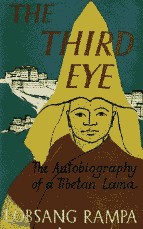 Ever since I was a very young boy I have been attracted by the incredible fascination and charm of Tibetan culture. To tell the truth, everything started when my sister, who was fully aware of my complete adversion to reading and wanted to do something about it - somehow, came up to me recommending a book which she assured I would find palatable.
Ever since I was a very young boy I have been attracted by the incredible fascination and charm of Tibetan culture. To tell the truth, everything started when my sister, who was fully aware of my complete adversion to reading and wanted to do something about it - somehow, came up to me recommending a book which she assured I would find palatable.
And she was right: that book came to me as an astonishing discovery. It was called The Third Eye, and was written by one Tuesday Lobsang Rampa – whom I later discovered to be a rather dubious and controversial figure.
The story, for those readers who've never heard of the book, is allegedly autobiographical, and relates the life of a boy who is brought up in a Tibetan monastery. If anything, it certainly paints an enjoyable and vivid picture of the atmosphere of the world it purports to describe – and captures that world at a time in which its purity had not been tainted by subsequent events.
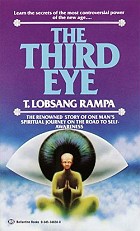 In the isolation of the Himalayan mountains, which sheltered it from outside influence, the medieval culture of Tibet miraculously had survived intact until 1959, preserving its perfect harmonisation with one of the most hostile natural environments in the world – a condition which went back through many centuries. 1959, however, was the year of the violent and illegitimate Chinese occupation of Tibet, and the survival of a magnificent civilization which for instance, keeping faith to the profecy of an ancient oracle, to this day even refuses to employ the wheel in transportation, was suddenly and seriously put into jeopardy. As a matter of fact, the only moving wheels in pre-Chinese Tibet were the prayer wheels which this outstandingly devout people unceasingly kept turning. It is for things like these that once one has come to be acquainted with the people of Tibet, one cannot fail but love them.
In the isolation of the Himalayan mountains, which sheltered it from outside influence, the medieval culture of Tibet miraculously had survived intact until 1959, preserving its perfect harmonisation with one of the most hostile natural environments in the world – a condition which went back through many centuries. 1959, however, was the year of the violent and illegitimate Chinese occupation of Tibet, and the survival of a magnificent civilization which for instance, keeping faith to the profecy of an ancient oracle, to this day even refuses to employ the wheel in transportation, was suddenly and seriously put into jeopardy. As a matter of fact, the only moving wheels in pre-Chinese Tibet were the prayer wheels which this outstandingly devout people unceasingly kept turning. It is for things like these that once one has come to be acquainted with the people of Tibet, one cannot fail but love them.
It is quite possible that I was simply rather impressionable as a teenager, and all too easily affected; but to this day, I still feel the emotional surge the book first brought to me, whenever I think back on my first reading it. I found myself thrown into a fable-like world of huge mountains and endless valleys; it made me perceive the esoteric atmospheres and holy darkness inside the monasteries. Thinking back upon it, I now realize the book fed into me the initial enthusiasm which later lead me to take certain significant steps in my life, and which still acts as a powerful motivator. It brought to me the curiosity to travel and meet other civilisations, the interest for the vast riches of oriental culture, and the search for an amazing martial art which would enable a sapling youth to measure up to adversaries stronger than himself.
It is possible that really is how it all started. At any rate, in 1985 I went on my first journey to the East – first stopping in Thailand, and then, via Hong Kong, over to China, just as it cautiously began to open its borders to tourists from the West. Being drawn as though by a powerful magnet, on 5 August 1985, at the end of a quest fraught with all kinds of logistic and (most of all) bureaucratic difficulties, I finally arrived in Lhasa, and thus realised a dream I at first had not dared hope could come true. That was my first encounter with the amazing civilisation that lives nested on the roof of the world.
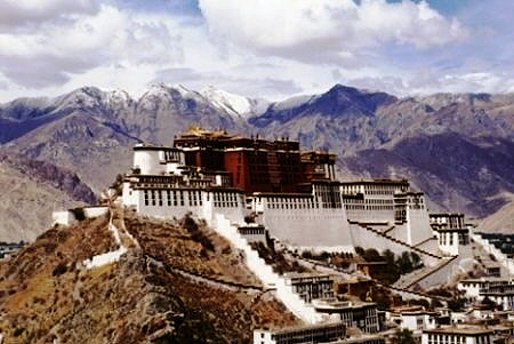 I must say that even then, after twenty-six years, the effects of Chinese domination were already heavily conspicuous. The effects of the systematic destruction of monasteries, of (enforced) immigration from China and the importation of contemporary urban styles of life were everywhere to be seen.
I must say that even then, after twenty-six years, the effects of Chinese domination were already heavily conspicuous. The effects of the systematic destruction of monasteries, of (enforced) immigration from China and the importation of contemporary urban styles of life were everywhere to be seen.
The new settlements represented a wanton insult to local architecture and the discrete manner in which the Lhasa of old had been conceived.
A city which had always been dominated by the imposing presence of the Potala (luckily spared by the iconoclastic fury of the Chinese).
Many were the signs of the wind of destruction that had swept over Tibet, and although the knowledge I then had of the local culture was extremely limited, the contrasts were oustanding and conveyed a most vivid sensation of all that had gone lost.
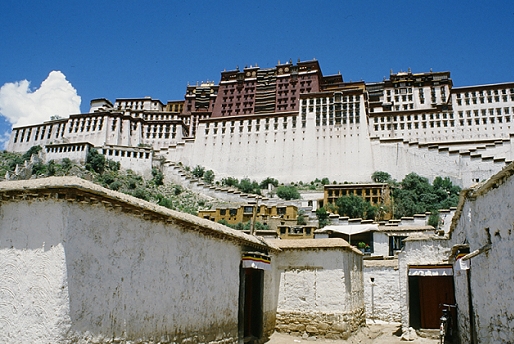 The effect of all of this on me (and likewise on the very scarce Western visitors there were) was a profound feeling of sadness, anger, and pity. I felt aggrieved, and the admiration for everything there was to see was curtailed by sadness.
The effect of all of this on me (and likewise on the very scarce Western visitors there were) was a profound feeling of sadness, anger, and pity. I felt aggrieved, and the admiration for everything there was to see was curtailed by sadness.
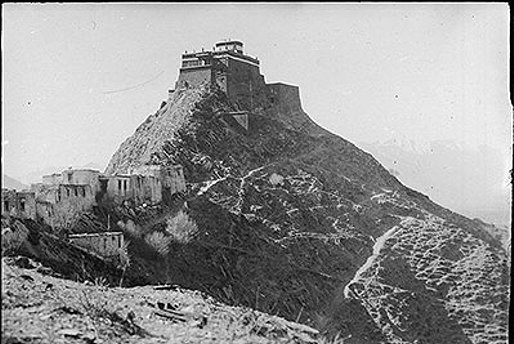 I remember the desolation and how my heart sank when, as I walked about Lhasa, trying to find my bearings and identify the sites I had read of in the book, I asked a local to show me the way to the Chak Pori – The temple of Tibetan medicine, the very place where the story is set.
I remember the desolation and how my heart sank when, as I walked about Lhasa, trying to find my bearings and identify the sites I had read of in the book, I asked a local to show me the way to the Chak Pori – The temple of Tibetan medicine, the very place where the story is set.
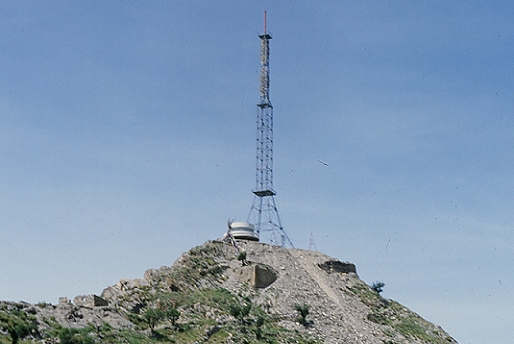 My gaze was directed to a hill which also appeared in the map inside my book. Only, at the top of the hill there was nothing left but a massive steel frame.
My gaze was directed to a hill which also appeared in the map inside my book. Only, at the top of the hill there was nothing left but a massive steel frame.
Nothing remained of that jewel of Tibetan architecture, of that vessel of infinite knowledge and wisdom except for a mount of grey rubble, a cascade of dust and debris along the sides of the hill.
Everything had been meticulously razed to the ground, brick for brick – and the same had been done to almost all the monasteries of the occupied territory. What a treasure the world had been deprived of!
In a certain sense, I was even unable to realise at the time how immensely privileged I was. There I was amongst those ruins, my mind consumed by the longing for a past that was irremediably lost, and not realising that things would actually soon change for the worse, rapidly and inexhorably. The accounts I have heard from people who visited Lhasa after me, even only a few years later, have completely obliterated any desire I might have had to go back. I suffered too greatly at the carnage the Chinese were deliberately making of Tibetan culture: transforming that remote province into a resource of wealth, pillaging its riches, exploiting it as a nuclear dump and tourist attraction, submitting it to unbeliavably asphixiating military patrols in order to prevent rebellion and grant their hold over what they regarded as a buffer between them and India, that undesirable colussus thay have for a neighbour.
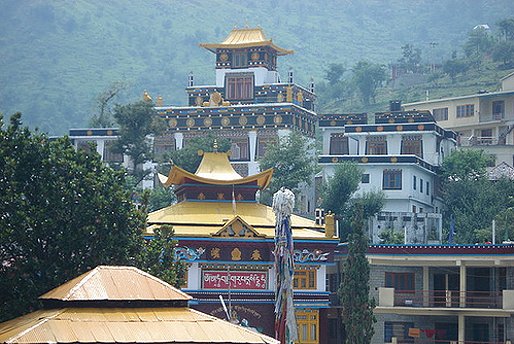 And yet, in a sense, the manoeuvres of destruction were to no avail: Tibetan culture managed to survive and is as lively as ever. The providential escape of the Dalai Lama, which came just in time to save his life, and India's generous offer of asylum have ranted its perpetuation. Millions of Tibetans have since then crossed the Himalaya on foot to flee Chinese prevarication and violence. The exodus continues to this day, and the refugees who survive the desperate crossing of that ocean of ice that lies at over 15,000 feet of altitude are greeted both by the Indian government and by the community of Tibetans who have rebuilt a centre in which to perpetuate their cultural identity in the vicinity of the town of Dharamsala, in northern India.
And yet, in a sense, the manoeuvres of destruction were to no avail: Tibetan culture managed to survive and is as lively as ever. The providential escape of the Dalai Lama, which came just in time to save his life, and India's generous offer of asylum have ranted its perpetuation. Millions of Tibetans have since then crossed the Himalaya on foot to flee Chinese prevarication and violence. The exodus continues to this day, and the refugees who survive the desperate crossing of that ocean of ice that lies at over 15,000 feet of altitude are greeted both by the Indian government and by the community of Tibetans who have rebuilt a centre in which to perpetuate their cultural identity in the vicinity of the town of Dharamsala, in northern India.
My love of Tibetan culture later inspired me to become a member of the Italia-Tibet society and to embark on a journey to Laddak in 1986. In 1997 my wife and I joined a long distance adoption program; then, four years ago, we went to visit a large refugee colony in southern India, and finally were able to meet the Tibetan family and the child whose upbringing we had sponsored: she is now a rather shy teenager, but speaks far better English than I do.

